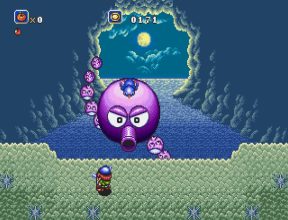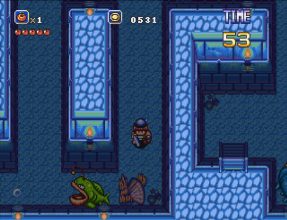Inspired by Zelda: Crusader of Centy is More Than Just Another Zelda Clone
Posted on September 09 2023 by Nick Miller
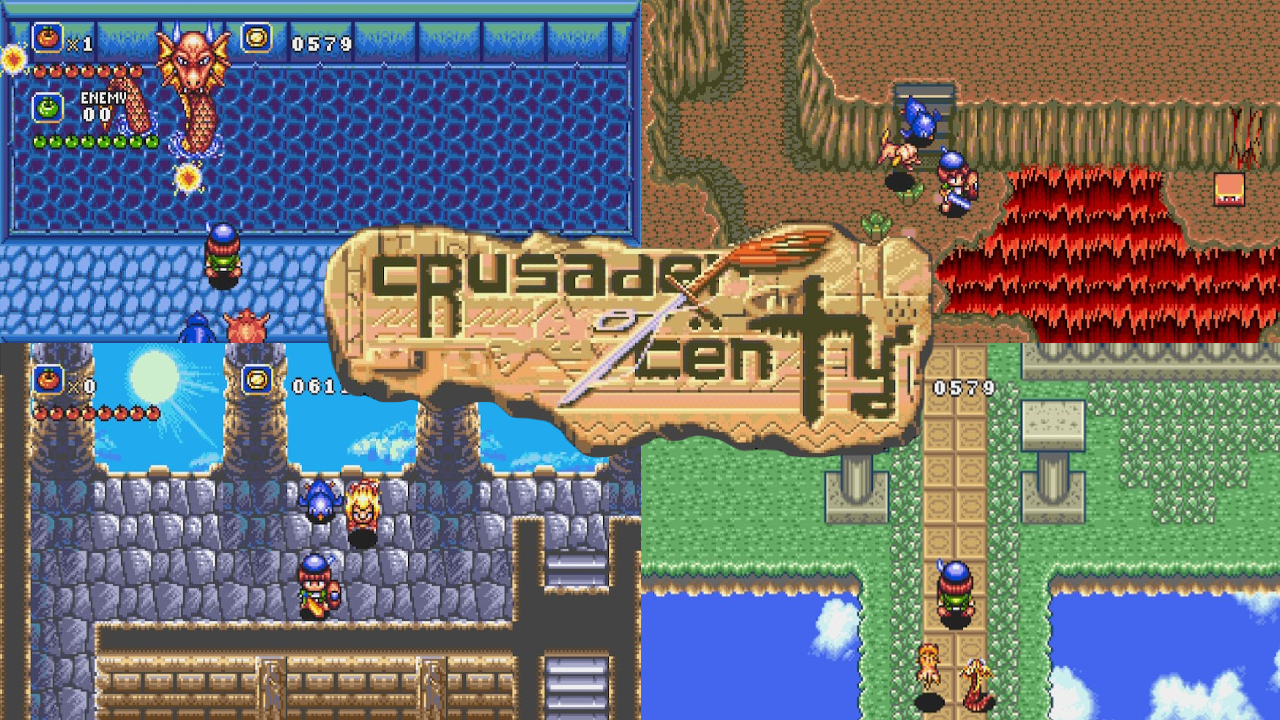
Whenever innovation comes about in the gaming industry, studios are quick to adopt those mechanics and styles into their own games, often improving upon them or pushing that innovation far enough to create entirely new genres. Before first-person shooters were a genre unto themselves, they were called “Doom clones.” To this day, games with labyrinthian maps and item/ability-based progression are often called Metroidvanias, as those mechanics were pioneered by the Metroid series and post-Symphony of the Night Castlevania games. Too many games, however, fail to innovate beyond the games that inspired them, and are forever relegated to “clone” status.
Crusader of Centy is a 1995 Sega Genesis title that has been dubbed, even by critics when it first launched, as a “Zelda clone” — more specifically an A Link to the Past clone — and at face value it’s easy to see why. Both are top-down action-adventure titles with real-time sword combat and vast fantasy worlds to explore. At first glance, they also seem to share a similar art style. That being said, I’m here to contend that Crusader of Centy has done enough to form its own identity, to stand out from the shadow of A Link to the Past, and to rise above its status as a simple Zelda clone.
A Young Hero From Soleil Town
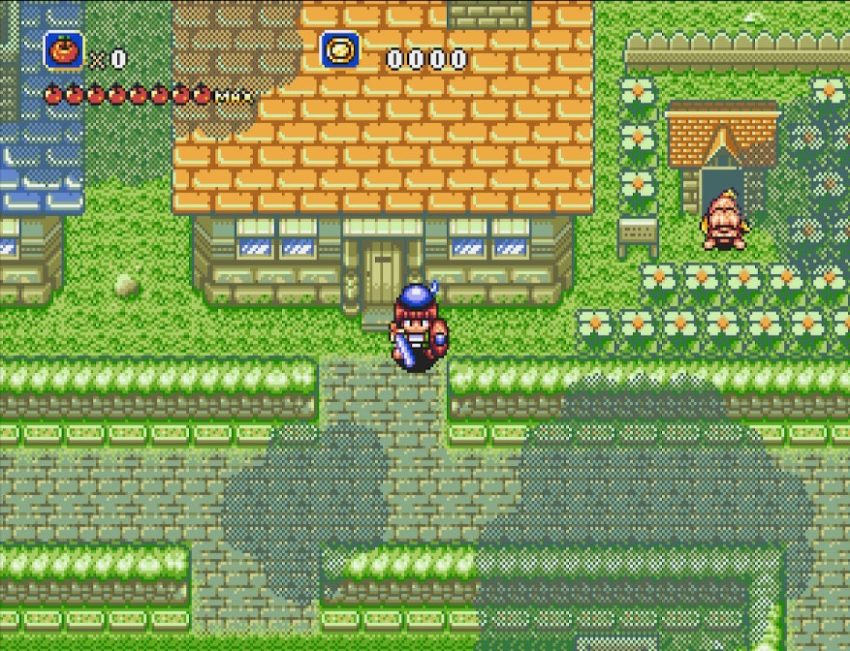
Crusader of Centy opens at the birthday party for Corona, a fourteen-year-old boy from Soleil Town. He is gifted his late father’s sword and shield as it is custom for the village’s young men to receive a sword on their 14th birthday and to begin their journey towards becoming heroes. Corona’s father was one of these heroes until he fell in battle with the monsters that infest the world. No one knows where these monsters came from or what their motives are, only that humans are at war with monsters, and that humans must prevail.
So, Corona sets out to explore the world and slay some monsters. Early on, Corona meets a fortune teller who gives him the ability to speak to animals but curses him so that he can no longer speak to humans. This curse sets the plot in motion as Corona tracks down the fortune teller, but it also introduces Crusader of Centy’s most unique gameplay element, animal companions — more on that later.
Crusader of Centy’s story is split into two main parts. The first has Corona exploring the world, opening up new areas, and making new animal friends, culminating at the Tower of Babel and a land above the skies. The game’s second act has Corona traveling to the past, eradicating the sources of monsters and learning their history, which in turn changes certain aspects of the present that can be experienced in-game.
As Corona explores the world, you will have many experiences that will have you asking, “What is a monster?” and, “Why are we fighting?” One such experience has Corona transformed into a slime monster, huddling in fear with a slime family after being chased underground by a hero that Corona admires. Slimemom warns you that “humans will attack anyone just for being different.”
This messaging permeates through many aspects of the game, particularly in the latter half, as you learn more about the monsters and experience events of the past, such as a witch trial of sorts where humans accused of being monsters are executed and imprisoned. As the game progresses towards its climax, you will increasingly find yourself asking which side is actually in the right, reminiscent in many ways of Undertale, a game which similarly tackles the ethics of a conflict between humans and supposed monsters.
More Than a Zelda Clone
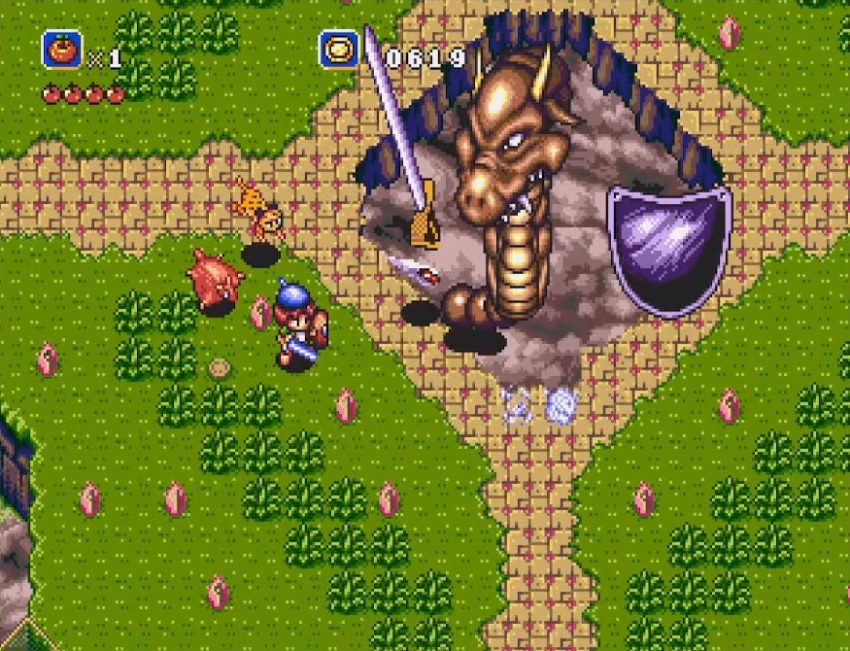
As I said before, Crusader of Centy’s similarities to A Link to the Past are only surface level. They both feature top-down exploration and real-time sword combat, but that’s really it. Right off the bat, you’ll notice a few minor differences, such as more detailed sprites and animations. This might not sound like much at first, but you have to consider these animations in combat and platforming, especially when split-second actions are required, as there is a slight delay between when the animation starts and when your sword makes contact. Corona has sprites for eight directional movements, not just four like in A Link to the Past, which allows for diagonal attacks that are necessary for a few puzzles and are incredibly helpful in boss fights. The addition of a dedicated jump button also makes for some minor platforming and adds more variety to your exploration.
Another big difference is items. Unlocking new items and abilities is a hallmark of the traditional Zelda formula. Unlike A Link to the Past’s arsenal of weapons and items, however, Crusader of Centy’s only usable item is a sword. So, how does the game add depth to your combat and puzzle solving without items? Well, this is where animal companions come into play. Each animal companion has a special ability that is activated either through a dedicated ability button or by throwing your sword. These abilities range from powerups to your sword, like fire and ice, to new abilities like a decoy or being able to control your sword after it is thrown. You can have two animal companions equipped at a time and some have synergy, which creates new abilities by combining the two. This allows for an incredible variety in your gameplay.
My go-to pairing on my playthrough was a cheetah that increased my speed and a flying squirrel that allowed a thrown sword to ricochet off walls. This meant that I could stand in a corner, throw my sword, and watch it fly around the room at light speed. One late-game boss in particular was pretty easy to cheese with this duo. Another useful combination is a dodo bird which makes a thrown sword hook onto items — similar to The Legend of Zelda’s many boomerangs — and a lion which endows your sword with flame magic. This duo will make flames from your sword attach to enemies, causing residual flame damage. These are just two examples, however. As you play the game, you will find many more unique animal combinations to fit your style or preference.
There are sixteen animals in total, and learning each one’s abilities and how they interact with each other is essential to completing the game, as certain boss fights require certain abilities and some puzzles cannot be passed without the right pairing. Fortunately, this is rarely a cryptic guessing game. Every boss’ weakness can typically be reasonably deduced from their sprite and attack animations. One such boss will have you switching between your penguin, who has ice abilities, and the aforementioned lion with fire abilities, depending on its color. Another boss requires you to use the dodo bird’s effect on your sword to pull its eye open, making it susceptible to flame attacks. All of the animals are useful too, which was surprising to me. Sure, some have more utility than others, but all serve a legitimate purpose, and none are one-and-dones.
Another major shift in gameplay from Zelda is the overworld map. Despite being a grand, sweeping adventure, the game is made up of levels placed on an overworld map, reminiscent of games like Final Fantasy: Mystic Quest or even Super Mario World. These levels range from linear segments primarily for traversal like Dhalia Valley or Hot Daisy, to more explorable regions like Anemone Beach or Camellia Desert. Of course, a few towns and dungeons make their way onto the map as well. This was a feature that I found disappointing at first, as I was hoping for an interconnected, explorable world like in A Link to the Past, but I soon realized that this wasn’t a weakness — though I wouldn’t exactly call it a strength either. Crusader of Centy is just a different type of game, and that’s okay. If anything, this helps it break from the constant Zelda comparisons.
A Modern Perspective
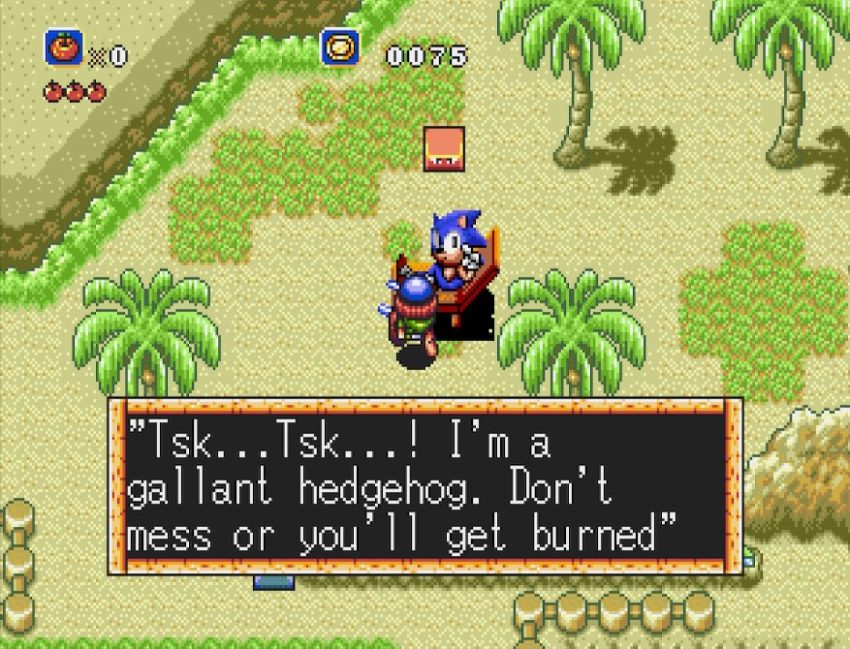
At the time of its release, Crusader of Centy received mostly positive reviews, with critics praising the game overall but drawing comparisons to A Link to the Past to its detriment. However, Crusader of Centy didn’t have sales numbers to match its reception and as such had a limited printing in North America. There are many factors that could have contributed to its lack of commercial success, such as poor marketing due to Sega prioritizing next gen hardware or from peripherals such as the Sega CD and 32x causing hardware confusion, deterring consumers from the Sega brand. I think the most likely reason is that Sega had branded itself as the edgy console for cool kids, full of mature action and arcade games, so there wasn’t much of a market for fantasy RPGs on the Sega Genesis. No matter the reason, Crusader of Centy flew under the radar and didn’t gain the attention it deserved until it caught the eyes of collectors. Since then, the game has gained a bit of a cult following and has ballooned in price thanks to its limited run.
While it may not be worth the unreasonable price of a physical cartridge, Crusader of Centy is certainly deserving of praise and is a worthwhile playthrough for any fan of the action-adventure genre. The sprite work and the art style are excellent and are comparable to even some of the retro-inspired indie titles that we have coming out today. The world is vibrant, believable, full of energy, and is generally pleasing on the eyes. I also really appreciated that I never had to guess what I was looking at. I know that compliment may seem odd by today’s standards, but with some of these older games, it really is a crapshoot. The sprites are detailed, and some bosses even pull off that pseudo-3D style popularized by games like the Donkey Kong Country series.
The gameplay is also commendable. The controls are responsive and easy to manage. Corona handles well. The enemies are interesting and the boss fights are memorable. Of course, the animal companion system is an absolute joy to play around with as well. The two things that really help this game distinguish itself from Zelda, however, are jumping and eight directional movements. They’re simple and seemingly insignificant features, but they give Crusader of Centy a completely different feel than the Zelda games that were available in 1995, and that’s not a bad thing.
For as much as I’ve sung this game’s praises, however, it isn’t all sunshine and rainbows. There are a few areas where the game falls a bit flat. First is the soundtrack. The soundtrack isn’t necessarily bad, it’s just forgettable. Every area has a unique track that is perfectly serviceable, but you’d be hard pressed to find any earworms. It’s actually impressive how I was able to play almost 10 hours of this game and not be able to recall any of the tracks, so much so that I actually had to look up the soundtrack to be able to write this review. The town theme and the Rafflesia School theme are the best of the bunch, but even those didn’t stick with me for very long.
Another thing that could use some improvement is the story. Of course, the messaging is handled well and there are plenty of emotional beats to keep the player invested, but the story is presented in two seemingly disjointed parts, at least in the first playthrough. The first half of the game is spent tracking down the fortune teller who cursed you. You ascend the Tower of Babel, fight a dragon, and your language is restored to you. Before returning to the ground, a mysterious voice behind a door declares, “Now this is the time to change history… The laws of nature will exist no more. The Crusade of Centy will be no more. Come to know the depths of man’s sin.”
When I first read this, I had no clue what they were even talking about, which is funny because the game built up to this moment as if it was a deeply meaningful declaration. I promise this wasn’t a matter of me breezing through crucial plot points or ignoring NPCs. This was the first (and I think only) mention of a Crusade of Centy other than on the title screen. This was just never explained. And there are a few points in the game like this where NPCs will tell you things with no context or explanation, but I guess that’s not terribly uncommon for early RPGs either.
It’s at this point then that you begin the second part of your quest, which starts with an NPC telling you that it’s snowing in Iris, so you head off to investigate. From here, you discover a cyclone that transports you to the past. In the past, you will defeat the sources of monsters and change history. In hindsight, I can see that this is what that voice behind the door was talking about, “to change history” and “to know the depths of man’s sin.” For a first playthrough though, this wasn’t so obvious. At the time, I felt like I was just chasing a time warp tornado around the map, not for any narrative reason, but because that’s just what the game wanted me to do. As such, I suspect that on a second playthrough, the two parts of the story will feel more cohesive.
The Verdict
Crusader of Centy is a lost classic. While it still lives in the shadow of A Link to the Past, and even comparable Sega titles like Beyond Oasis, I suggest it’s time we change that. Crusader of Centy is more than a Zelda clone. It is an excellent game that stands on its own merits and that has held up remarkably well with time. The few areas where it misses the mark are negligible when compared to the fun you’ll have while playing it. This is a game I’d recommend to anyone who is a Zelda fan or just a fan of the action-adventure genre.
And with Crusader of Centy recently releasing on Nintendo Switch Online, there isn’t a better time to play this game than now.
So tell me, will you be giving Crusader of Centy a try? Have you already played it? Do you think it’s more than just a Zelda clone? Let me know in the comments.

Nick is a writer for Zelda Dungeon and a longtime fan of the Zelda franchise. In his free time, he enjoys fishing, archery, skateboarding, and some good ol’ fashioned family time. He’s an advocate for physical media and an avid video game collector. His favorite Zelda game is Ocarina of Time, though Breath of the Wild and the Link’s Awakening remake are close contenders.



